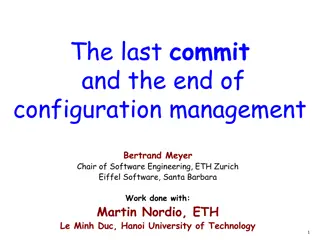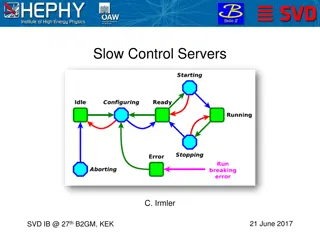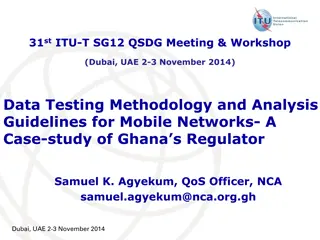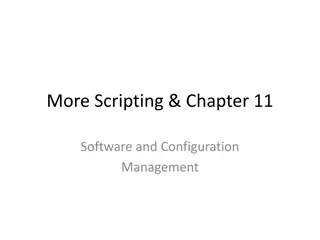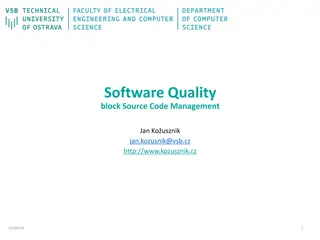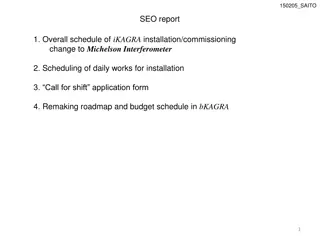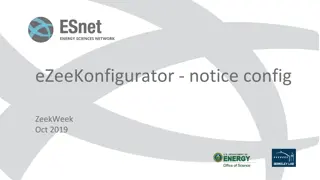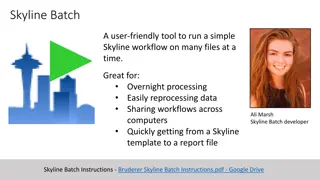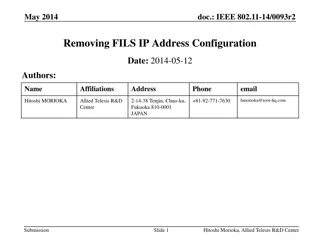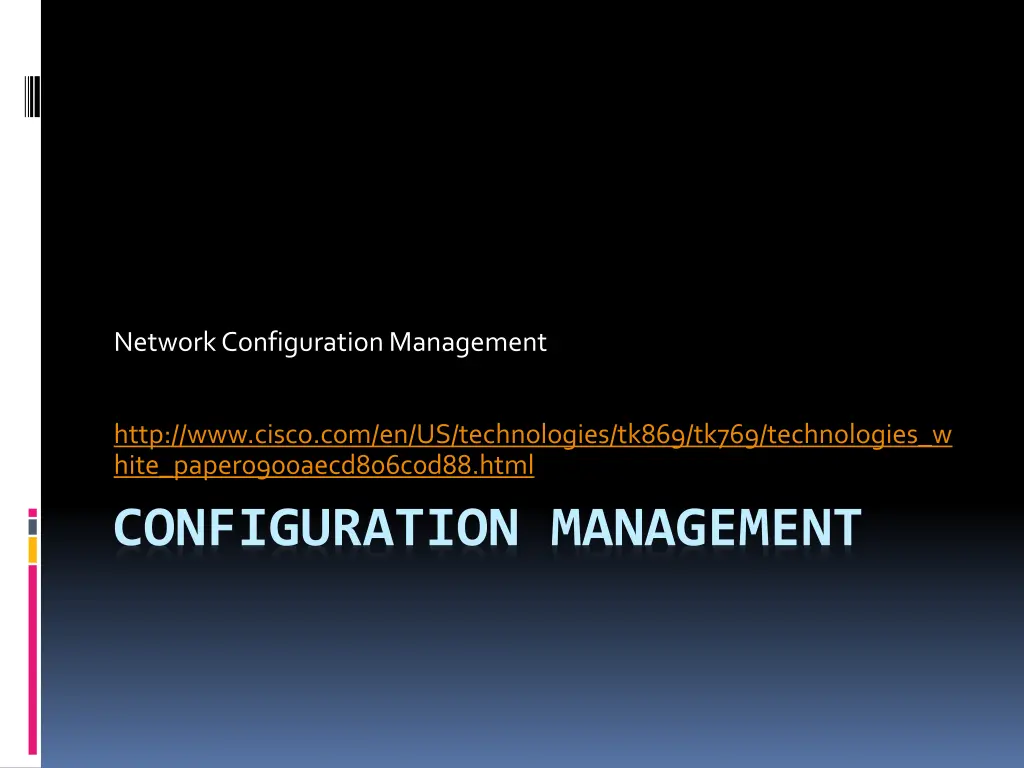
Effective Network Configuration Management Strategies
"Discover best practices for configuration management, including maintaining device lists, managing credentials, and achieving differentiated management. Learn about the importance of addressing people, processes, and technology in configuration management. Explore the role of configuration management in monitoring network and system information to ensure smooth operations."
Download Presentation

Please find below an Image/Link to download the presentation.
The content on the website is provided AS IS for your information and personal use only. It may not be sold, licensed, or shared on other websites without obtaining consent from the author. If you encounter any issues during the download, it is possible that the publisher has removed the file from their server.
You are allowed to download the files provided on this website for personal or commercial use, subject to the condition that they are used lawfully. All files are the property of their respective owners.
The content on the website is provided AS IS for your information and personal use only. It may not be sold, licensed, or shared on other websites without obtaining consent from the author.
E N D
Presentation Transcript
Network Configuration Management http://www.cisco.com/en/US/technologies/tk869/tk769/technologies_w hite_paper0900aecd806c0d88.html CONFIGURATION MANAGEMENT
Best Practices for Configuration Management Maintain a master device list Maintain correct credentials and manageability at 100 percent Create relevance for users and management Achieve differentiated management; "not all devices are equal" Address people, processes, and technology, not just technology Develop processes to work for your company Commit resources; this is not a project, it is a system
Defining configuration management
From 2ndweek : Configuration Management to monitor network and system configuration information so that the effects on network operation of various versions of hardware and software elements can be tracked and managed. The goal of configuration management
Configuration Management Each network device has a variety of version information associated with it. An engineering workstation, for example, may be configured as follows: Operating system, Version 3.2 Ethernet interface, Version 5.4 TCP/IP software, Version 2.0 NetWare software, Version 4.1 NFS software, Version 5.1 Serial communications controller, Version 1.1 X.25 software, Version 1.0 SNMP software, Version 3.1
Configuration Management Configuration management (as subsystems of Network Management System) store configuration information in a database for easy access. DATABASE When a problem occurs, this database can be searched for clues that may help solve the problem. DATA RETRIEVE
What Is Configuration Management? Configuration management can be summarized as: Device hardware and software inventory collection Device software management Device configuration collection, backup, viewing, archiving, comparison Detection of changes to configuration, hardware, or software Configuration change implementation to support change management
Why Is Configuration Management Important? Benefits : 1. Reduced downtime through rapid change impact identification 2. Productivity improvement for making configuration changes 3. Helps ensure compliance for device configuration, software versions, and hardware 4. Quick impact determination of security alerts 5. Improved visibility and accountability at all levels
Foundational and Fundamental Configuration management is the cornerstone of the network management system and of the network lifecycle cornerstone Configuration management knows what is in the network, and it provides control over network elements and linkage between the phases of the lifecycle.
ASSOCIATION OF ROLES AND DEFINITION linkage between the phases of the lifecycle control over network elements NO ITEM OF DEFINITION 1 Device hardware and software inventory collection 2 Device software management 3 Device configuration collection, backup, viewing, archiving, comparison 4 Detection of changes to configuration, hardware, or software 5 Configuration change implementation to support change management
NETWORK LIFE CYCLE Phases in the network lifecycle : Operate Prepare Design Optimize Implement Plan
the roles in network delivery and support (network services) : 1 Management 2 Architecture 3 Delivery 4 Support
Lifecyles and Roles for Delivering and Supporting Network Services Prepare Plan Design Impleme nt Operate Optimize Manage ment X X Architect ure X X Delivery X X Support X X the flow of work through a network team and the demarcation in responsibilities between roles.
Configuration management provides the implementation point for demarcation; from this, processes can be developed that supports the network lifecycle and the necessary roles.
The requirements for configuration management are: The requirements for configuration management are: 1. Collect network inventory, including chassis and modules as well as serial numbers 2. Report on collected network inventory 3. Collect device configurations 4. Keep multiple versions of device configurations 5. Allow comparison between the multiple versions of device configurations 6. Detect changes in device configurations (event or polling based) 7. Determine which user made changes to device configurations 8. Report on configuration changes
The requirements for configuration management are: 9. Allow configuration changes to be batched and scheduled 10. Report on existing software versions deployed on devices 11. Keep a repository of device software versions 12. Support upgrading of device software 13. Audit configuration to help ensure compliance 14. Search device configurations, software, and hardware 15. Store or link to static documentation and diagrams 16. Support the approval processes and workflows
Asset Management Purchase date Purchase price If the configuration management system needs to support asset management, then the additional requirements needed to support business accounting processes, such as depreciation, are: Asset number Purchasing details
Carrier Service Management Service number Carrier (telco) Contract start date If the configuration management system needs to support carrier service management, then additional requirements that support carrier service management and contract renewal are needed. Some of these requirements are: Contract period Currency Cost per month
Change Impact Policy Change Type Change Impact Software upgrade major, for example, 12.3(4) to 12.4(5). High Configuration change to packet forwarding capabilities High Software upgrade maintenance release, for example, 12.4(1) to 12.4(2) Medium New feature deployment Medium New hardware deployment Medium Configuration change to nonpacket forwarding capabilities Low Change Impact The change impact is the possible impact the change can have on the production environment







